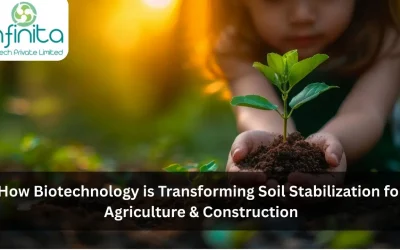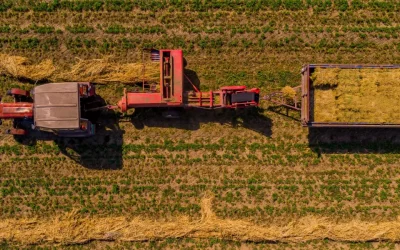Composting is a complicated process involving organic waste and microbes. This procedure can be carried out by three types of microorganisms: bacteria, fungus, and actinomycetes depending upon the method of composting. Actinomycetes are bacteria that decompose organic substances. The absorption of readily available carbohydrates by bacteria is the early phase of biological composting processes, which results in a rapid increase in temperature. Bacteria and actinomycetes promote cellulose degradation in the second phase. The degradation of the harder lignins by fungi is dealt with in the final stage of composting.
What Is Composting?
Composting is a type of aerobic decomposition of organic waste material. It is a common method of repurposing organic waste to create fertilizer. Composting can be used for a wide range of waste types, including liquid and solid waste.
Methods Of Composting
Methods of composting are divided into three categories:
- Anaerobic composting
- Aerobic composting
- Vermicomposting
Anaerobic composting
In the anaerobic composting process, the organic material decomposes in the lack of oxygen or air. Organic material can be deposited in pits, coated with a heavy layer of dirt, and left for 6 to 8 months without being disturbed.
Aerobic composting
It is a composting process wherein organic wastes are turned into compost or fertilizer using atmospheric oxygen. The heap method of composting is by far the most prevalent method where organic debris is split into three sorts and piled one on top of another, topped with a thin layer of dirt or dried leaves. The pit methods of composting use the same procedure, but it is conducted out in specifically created pits.
Vermicomposting
Vermicomposting is a composting process where specific earthworm varieties are utilised to improve the organic waste transformation and provide a better final product. Microbes and earthworms are used in this mesophilic procedure. The organic waste is fed to earthworms, who then process it through the digestive tract and produce vermicompost in the form of granules (cocoons).
Enzymes Involved In The Composting Process
The application of different bulking agents has a significant impact on the composting process as well as the physicochemical and biological characteristics of the finished compost. Microbial activity can be effectively measured using enzyme activities and microbial respiration monitoring during the process of composting.
Their enzyme activity determines the ability of soils to undertake biochemical reactions. Enzymatic activity had also been investigated as a potential technique for compost categorization and maturity evaluation. Enzyme catalysis is responsible for biological reactions in the process of composting.
Enzymes are classified into seven categories according to the type of reaction they catalyse in the process of composting:
Oxidoreductases
These enzymes specifically act on the CH-OH group of donors, oxo group of donors or the aldehyde, the CH–NH2 group of donors, the CH-CH group of donors, the CH–NH group of donors, and the CH–NH group of donors, among others.
Transferases
These are groups of enzymes that transfer one-carbon groups, ketone or aldehyde groups, aryl or alkyl groups except for methyl groups, nitrogenous groups, phosphorus-containing groups, etc.
Hydrolases
These enzymes act on ether, ester, and peptide bonds, as well as C-N, C-C, P-N, and C-S bonds.
Lyases
There are many types of lyases for different bonds such as C-C lyases, C-O lyases, C-N lyases, and C-P lyases.
Isomerases
Racemases, epimerases, and intramolecular isomerases are some enzymes released in the composting process to digest various isomeric bonds.
Ligases
These enzymes form C-O, C-S, and C-N bonds, etc, to facilitate the formation of new bonds and eventually the final product.
Enzymes In Organic Matter Degradation
Several enzymes are involved in the composting process. They help in controlling the ecosystem by the degradation of organic materials, conversion of organic material, nutrient uptake, nitrogen-fixing, detoxifying of hazardous materials, including xenobiotics, pesticides, pharmaceuticals.
Some hydrolase enzymes are involved in metabolic activities during the degradation of organic materials, namely:
β-glucosidase
It is a widespread enzyme that plays a role in the carbon cycle by cleaving cellobiose generating glucose units.
Acid phosphatase
Phosphate-solubilizing microorganisms excrete extracellular phosphatase as acid and alkaline phosphatase, which is necessary for the conversion of organically bound phosphorus into accessible forms.
Arylsulphatase
Aromatic sulphate esters are hydrolysed by arylsulphatase, which yields SO42. It is a marker of sulphur absorption in soils and also plays a role in the material’s cycle.
Lipases
These are enzymes that catalyse the degradation of fats and oils, releasing free fatty acids, diacylglycerols, monoglycerides, and glycerol as a result.
Chitinases
These are enzymes that can break down the chitin chain. Exo Chitinases and endo chitinases are two types of chitinases.







